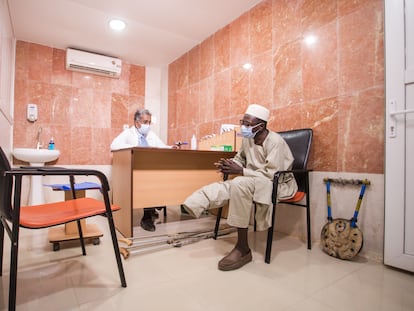It’s not witchcraft, it’s a lack of development aid: a political lurch from London is putting the eradication of diseases in Africa at risk
The United Kingdom’s cuts to international development funding threaten to reverse the path towards eliminating the so-called neglected tropical diseases in several African countries
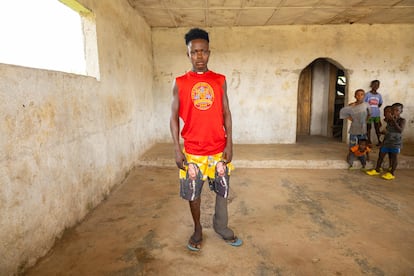
These are the real consequences of a colossal political lurch. Almost three years ago, when the country was suffocated by a slow response to the pandemic and the ravages of a disastrous Brexit, the United Kingdom decided to cut its development aid. In so doing, the country’s Conservative government eliminated a program that allowed the poorest of the poor receive treatment in 23 African and two South Asian countries. And the devastating consequences are still being felt on the ground. It is the story of how decisions made in contexts of political pressure and electoral calculations irreversibly determine the lives of people thousands of miles away.
One of these people is David, a Liberian boy with a leg that started swelling about a year ago. Many of its neighbors think that it is some type of witchcraft but in fact, it is due to a parasite transmitted by mosquitoes. Tiny worms lodge in the lymphatic vessels and spread throughout the body via the blood. The ailment is called lymphatic filariasis, popularly known as elephantiasis, and it is one of the so-called neglected tropical diseases (NTDs). The world was moving at a good pace towards eliminating NTDs, but now there has been a setback — caused not by science, but by politics — and they may once again pose a threat to public health.
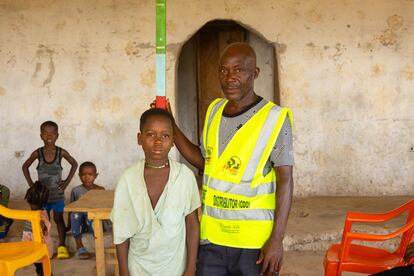
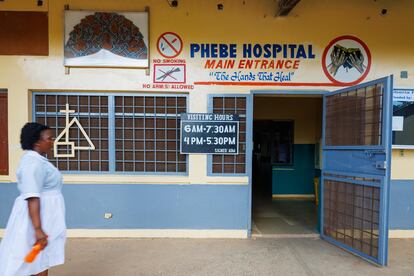

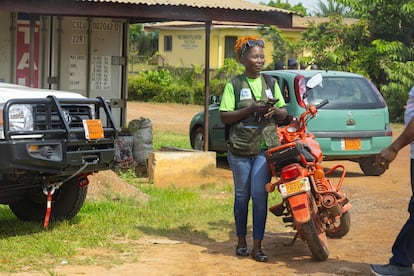
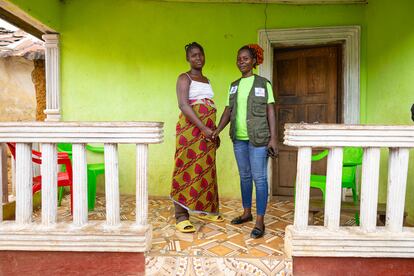

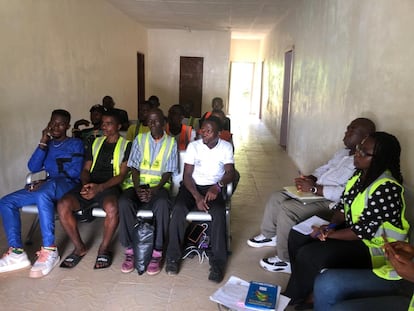
Despite his oozing sores and the size of his left leg, which prevents him from walking normally, David has never seen a doctor. From his house in the heart of Liberia, it is 7 miles to the nearest hospital. It is a distance that can be covered by motorcycle in half an hour along the dirt road that separates him from the hospital in Phebe. But his mother never wanted to take him. In a laconic conversation, 18-year-old David doesn’t quite know how to explain why. He mentions money to get there — Liberia’s 5.1 million inhabitants have an annual per capita income of $735, ranking it 12th from bottom in the world — but in most of these cases, distrust in medicine and ignorance about the causes and cures of the disease both play a role.
The WHO estimates that around 36 million people are infected by this parasite worldwide, although only a small proportion develop symptoms. The most extreme, like David’s, lead to frightening deformities in the limbs. In Liberia, those who live with this disease — those who at least know someone who suffers from it — tend to call it “big foot.”
Once the leg has reaches that state, the disease no longer has a remedy. With cleaning and treatment David can improve his quality of life, but he will no longer be able to play football or join the army. That was his aim to earn a living as an alternative to subsistence farming, the main occupation in the country. Caught in time, the disease could have been stopped. And with preventive treatment, he would never have contracted it.
In total, there are twenty preventable and sometimes curable diseases — often caused by parasites transmitted by biting insects or contaminated water — that without adequate treatment destroy the bodies and lives of millions of people. They are also diseases of the poor, because they mainly affect countries in the Global South and disproportionately affect women and children, which is why they do not receive sufficient attention or funds from developed societies or even from their own governments.
In November 2020, when the country was suffocated by a slow response to the pandemic and the ravages of a disastrous Brexit, the United Kingdom’s Conservative government decided to cut the country’s development aid, from 0.7% of GDP to 0.5%, and eliminate the £220 million ($278 million) per year that allowed the poorest of the poor to receive treatment in 23 African and two South Asian countries
Chemical prophylaxis, which consists of the preventive taking of medications on a massive scale, is the WHO’s main strategy to eradicate this and other NTDs in affected areas. It is an achievable goal and the medication is available to governments free of cost. But it has to reach the entire population at risk and be maintained consistently. In 2014, the Ebola crisis in the country paralyzed the program. In 2020 it was Covid. Every lost year is an opportunity for diseases to get some respite and advance positions. In 2021 the final blow came with the withdrawal of British funds. The United Kingdom was the main support for the project to eliminate NTDs, from which millions of patients suffer in dozens of African countries.
In November 2020, when the country was suffocated by a slow response to the pandemic and the ravages of a disastrous Brexit, the United Kingdom’s Conservative government decided to cut the country’s development aid, from 0.7% of GDP to 0.5%, and eliminate the £220 million ($278 million) per year that allowed the poorest of the poor to receive treatment in 23 African and two South Asian countries.
Back to square one
“The gap left by the British Government was so big that it has been very difficult to fill. We have not recovered the level of funding for NTDs. After the British cut, there are more orphan countries,” says Jorge Cano Ortega from the Republic of Congo, chief of evaluating the impact of the cessation of financing at the World Health Organization (WHO). “We have spent many years investing in controling these diseases and with a little more effort they could be eliminated. The risk is losing all the gains that have been achieved.” There are diseases, he explains, in which the interruption of a year or two of treatment means going back to square one. There are countries that have been on treatment for 20 years and can lose what they have gained.
Cano maintains that the British case is especially significant, but not unique. “It is a trend that we have seen with other funders because since Covid, malaria has also suffered, and interest in NTDs has been lost.”
We have spent many years investing in controling these diseases and with a little more effort they could be eliminated. The risk is losing all the gains that have been achievedJorge Cano Ortega, chief of evaluating the impact of the cessation of financing at the WHO
In response to a request from this newspaper, the WHO prepared a study that indicates that the cut in funds is considered “a major setback for the control of NTDs in sub-Saharan Africa” and explains, that in the case of lymphatic filariasis, the number of patients who stopped receiving treatment increased from 31% to 67% between 2020 and 2021. The following year there was an improvement, but the WHO recalls that stopping treatment increases costs and increases the risk of infection.
In Nigeria, almost 60 million people stopped receiving treatment in 2021. By 2024, there is again a considerable lack of financing. Some programs have recovered with patches and one-time donors, but in general, coverage for these diseases has fallen compared to pre-pandemic levels, according to the WHO’s internal analysis.
The countries affected by the British cut embarked on a desperate race to find financing to cover the gap. Some found it and some did not. In the case of Liberia, the British decision is keeping the African country’s health authorities in suspense, as it seeks funds for the program each season. Until last year they had the help of the Canadian NGO Sightsavers International, Unlimit Healthand and the Liverpool School of Tropical Medicine, but the latter completed its research last year and withdrew.
Karsor Kollie, head of Liberia’s NTD program, says that since 2021 they have been looking for financiers who would allow the disease elimination plan to continue last year. They found one in extremis last summer in Spain. Participating in this program was not something that was on the road map of the Spanish organization Anesvad, but the Liberian authorities convinced them of the urgency of financing. Larraitz Ventoso, project technician at the foundation, summarizes: “Normally we focus on case management [treating diseases] because it was something for which there was less funding. But when they explained the withdrawal of funds from various international partners, we saw that we had to get involved with prevention to stop the system overflowing. It was something we had never done until now. It is a task in which large international investors in development usually participate.”
London championed the fight against NTDs. Three months before the budget blow, Boris Johnson announced that the UK government had provided treatment to 160 million people in Africa and Asia and remained committed to eradicating these diseases
Until the British cutback, London had led the fight against NTDs. In fact, in January 2021, the then Prime Minister of the United Kingdom, Boris Johnson, issued a video message to commemorate forgotten diseases day in which he said: “Children are going blind, many are losing their teeth. There are people who are disfigured or even die from diseases that are often easy to treat and prevent […] there is nothing inevitable about this suffering.” He also explained that the number of people at risk of contracting these diseases had decreased by 600 million. That the UK government had provided treatment to 160 million people in Africa and Asia, and remained committed to eradicating these diseases. Three months later funding was cut.
The United Kingdom, along with the United States, was the main financial donor in the battle against this type of disease. Germany, France, and Japan followed at a distance. After the British scare, philanthropy came to the rescue to try to bridge the gap in some of the affected countries. “Evidently they didn’t cover it 100%,” explains Cano. The expert, for whom “the risk of not maintaining coverage to stop transmission risks being unable to declare and end to the disease as a public health problem.” He estimates that 141 million people are not receiving treatment for these diseases in 27 African countries that need it.
The almost $976,000 that the Anesvad Foundation contributed last year — which also covered the expenses for this report — allowed prophylaxis to begin in November 2023. That figure covers almost 65% of the program and is added to the 35% that Sightsavers International has maintained. One of the premises for Anesvad was to create a medium-term strategy. It will last four years and will involve an advocacy plan so that the project is not abandoned and a large donor can add to the financing, or take charge of it.
A logistical labyrinth
What is critical about this type of project is not the medications themselves, which are mainly three very well-known, safe treatments (ivermectin, albendazole, and praziquantel). Liberia and other countries in western Africa have access to these drugs thanks to donations from the WHO and pharmaceutical companies. It is distributing them that is really complicated. In addition to the logistics of reaching very remote and poorly communicated areas, it also includes training volunteers to explain to their communities why it is important to take these pills. And often convince them that ailments do not arise from witchcraft or the evil eye.
Thoko Elphick-Pooley, executive director of Uniting to Combat NTDs, the international alliance to fight these diseases, explains that the NTD case is extraordinary, because through London declaration in 2012, a group of pharmaceutical companies from G7 countries committed to providing millions of treatments... and they fulfilled it. The states needed to receive the medicines, map the territory to determine who needed them, and supply them. “Imagine what it means for a woman who has a child with an intestine infested with worms to know that there is a treatment for him, but that they cannot get it to him. We are entrenching inequalities when in fact we already have the solution to hand.”
Imagine what it means for a woman who has a child with an intestine infested with worms to know that there is a treatment for him, but that they cannot get it to him. We are entrenching inequalities when in fact we already have the solution to handThoko Elphick-Pooley, executive director of Uniting to Combat Neglected Tropical Diseases
Elphick-Pooley says that there were cases after the funding cut in which they even had to transfer consignments of medicines that had already been delivered from one country to another that had the ability to distribute them. “There is a lot of talk about public-private partnerships, but in this case it is the governments that are not complying.”
In the case of the British government, its cuts were said to be a temporary measure, but the program has not been reinstated nor have previous levels of aid been reached. “Even if they wanted to, politically they feel that they cannot go back on their word, because it would be equivalent to having made a mistake,” says Elphick-Pooley.
Furthermore, when a country like the United Kingdom abandons a large program, it somehow sends the signal that this is not a priority, and it is difficult to convince other donors that such investments are profitable. But these diseases are “one of those rare cases in which donors can show the public that their tax dollars have been worth it,” Elphick-Pooley believes. There are 50 countries that have already eliminated at least one NTD.
A spokesperson for the UK’s Foreign, Commonwealth, and Development Office assures this newspaper that “the United Kingdom is committed to the fight against malaria and will continue to be one of the main donors with the aim of ending malaria by 2030.” Regarding the fight against NTDs, they attribute the suppression of funds to the impact of the pandemic and maintain that after the cut they supported the completion of operations and other scheduled activities to the extent that it was possible.
The result of having interrupted some programs is that there will be countries that will take much longer to eliminate these diseases, with the consequent human cost. “In others, they will become bigger problems because it is impossible to avoid intervening in infectious diseases. There are diseases that have pandemic potential, as we are seeing with dengue fever that is growing in Europe. They are a risk to public health,” says Elphick-Pooley.
The Malaria and NTD Summit held last year in Kigali concluded that “Against the backdrop of disruptions of essential services and supply chains during the Covid-19 pandemic and plateauing of development aid funding, thework to eliminate these diseases had stalled and even reversed in some countries.”
Let them take the pills
Back in Liberia at the end of November, Kollie speaks to a group of about twenty people in Phebe. They are leaders of the surrounding communities, of young people’s, and women’s organizations. These influential people can persuade the members of their communities and organizations that, when the volunteers arrive on motorcycles with the pills, they take them. “The reason why their skin doesn’t itch, why they don’t go blind or have big feet is because they take the medication every year,” the ETD person in charge tells them. He does not know how many cases the country whose epidemiological resources are more than limited reports each year. But he does state that they are becoming fewer and fewer thanks to the prophylactic administration of drugs. The treatment manages to eliminate the parasites in the bodies of those who are infected, whether or not they have symptoms. And this not only benefits them, but cuts transmission to other people. The worms are cornered until they no longer have a host and disappear, making it unnecessary to continue prophylaxis.
The result of having interrupted some programs is that there will be countries that will take much longer to eradicate these diseases, with the consequent human cost
In the conversation with community leaders, these messages are mixed with others about basic hygiene, such as not urinating or defecating in the same water that the surrounding populations use to clean themselves, wash their utensils, or where children bathe to cool off and play. “No matter how much we warn them about the risks of these waters, it is impossible for them not to use them, because they have nothing else, so the only way to end diseases is with the mass administration of medications,” explains Peter S. Kollie, NTD coordinator with the Ministry of Health in Bong County.
Abraham Kallie is one of the volunteers attending the talk. He has a 1.8 meter wooden rod divided into colors: it is used to measure children and give them the dose of medicine depending on the color they reach. He lives in the Raymond Town community, population 166, which is also where David the boy with filariasis lives. Kallie is a farmer, has seven children, and enthusiastically recounts his involvement in the fight against neglected diseases: “I tell [the neighbors] that medicine is good for them. It’s like a bulletproof vest. If they shoot you it doesn’t do anything to you. And I tell you that if they get infected they can get very sick. But despite that, some do not listen to me. They believe that it is the medicine that makes them sick.”
What Abraham Kallie tells is a classic tale in preventive medicine. In the country it is increasingly rare to see cases like David’s, or cases of onchocerciasis, which manifests itself with itching all over the skin and can lead to blindness. Schistosomiasis, which can cause abdominal pain, diarrhea and blood in the stool, as well as an increase in the size of the liver in advanced cases is rare too. It is not as intuitive to identify the benefits of a medication that has prevented a disease as that of another that cures it. And you do not have to go to remote African communities to see it, as has been seen in the West with Covid vaccines among small, but noisy population groups.
The fact that diseases are becoming less frequent, paradoxically, does not help elimination. The population is losing their fear of them. They are more aware of others, such as malaria, which is endemic in these areas. And, when they do appear, NTDs are fraught with stigma. By not knowing the causes of diseases, populations also tend to ignore how they are transmitted. “Families must be brought together to tell them that they stop being contagious when they take the medication. It is very important to prevent the mental problems that are usually associated with NTDs,” says Peter S. Kollie.
Emerson J. Rogers, who coordinates case management in Liberia, says that the impact of these diseases not only has to do with physical health, but often prevents those affected from earning a living and supporting their family. “We have cases of patients who have been abandoned by their loved ones, husbands who have left their wives due to lymphedema [swelling in the legs], or women who have left their husbands due to a buruli ulcer [a disease caused by a bacteria from the family of those that cause leprosy and tuberculosis], which can be cured with some time [it usually subsides with antibiotics]. We have seen people who have never been cared for before attempt suicide. But we went to their communities or saw them in health centers and that simply gave them relief. They saw that someone cared about them,” he says.
David has never received medical care, but he is lucky with his environment. “My friends in the community support me and help me,” he says surrounded by other kids his age who show him their love.
Sign up for our weekly newsletter to get more English-language news coverage from EL PAÍS USA Edition
Tu suscripción se está usando en otro dispositivo
¿Quieres añadir otro usuario a tu suscripción?
Si continúas leyendo en este dispositivo, no se podrá leer en el otro.
FlechaTu suscripción se está usando en otro dispositivo y solo puedes acceder a EL PAÍS desde un dispositivo a la vez.
Si quieres compartir tu cuenta, cambia tu suscripción a la modalidad Premium, así podrás añadir otro usuario. Cada uno accederá con su propia cuenta de email, lo que os permitirá personalizar vuestra experiencia en EL PAÍS.
¿Tienes una suscripción de empresa? Accede aquí para contratar más cuentas.
En el caso de no saber quién está usando tu cuenta, te recomendamos cambiar tu contraseña aquí.
Si decides continuar compartiendo tu cuenta, este mensaje se mostrará en tu dispositivo y en el de la otra persona que está usando tu cuenta de forma indefinida, afectando a tu experiencia de lectura. Puedes consultar aquí los términos y condiciones de la suscripción digital.
More information
Archived In
Últimas noticias
Chris Martin, Taylor Swift, Elijah Wood and other famous wedding ‘crashers’
‘How does it feel to be a failure?’: Elizabeth Berkley’s journey from ‘Showgirls’ ridicule to vindication
The story of the Málaga virus: The code that haunted Google’s cybersecurity center director for 30 years
The impact of Ecuador’s mega-prison: A polluted river, cleared forests and military checkpoints
Most viewed
- The low-cost creative revolution: How technology is making art accessible to everyone
- Christian Louboutin: ‘Young people don’t want to be like their parents. And if their parents wear sneakers, they’re going to look for something else’
- All the effects of gentrification in one corner of Mexico’s Colonia Roma
- Liset Menéndez de la Prida, neuroscientist: ‘It’s not normal to constantly seek pleasure; it’s important to be bored, to be calm’
- December Social Security and SSI payments: Dates, double checks and the 2026 COLA increase
